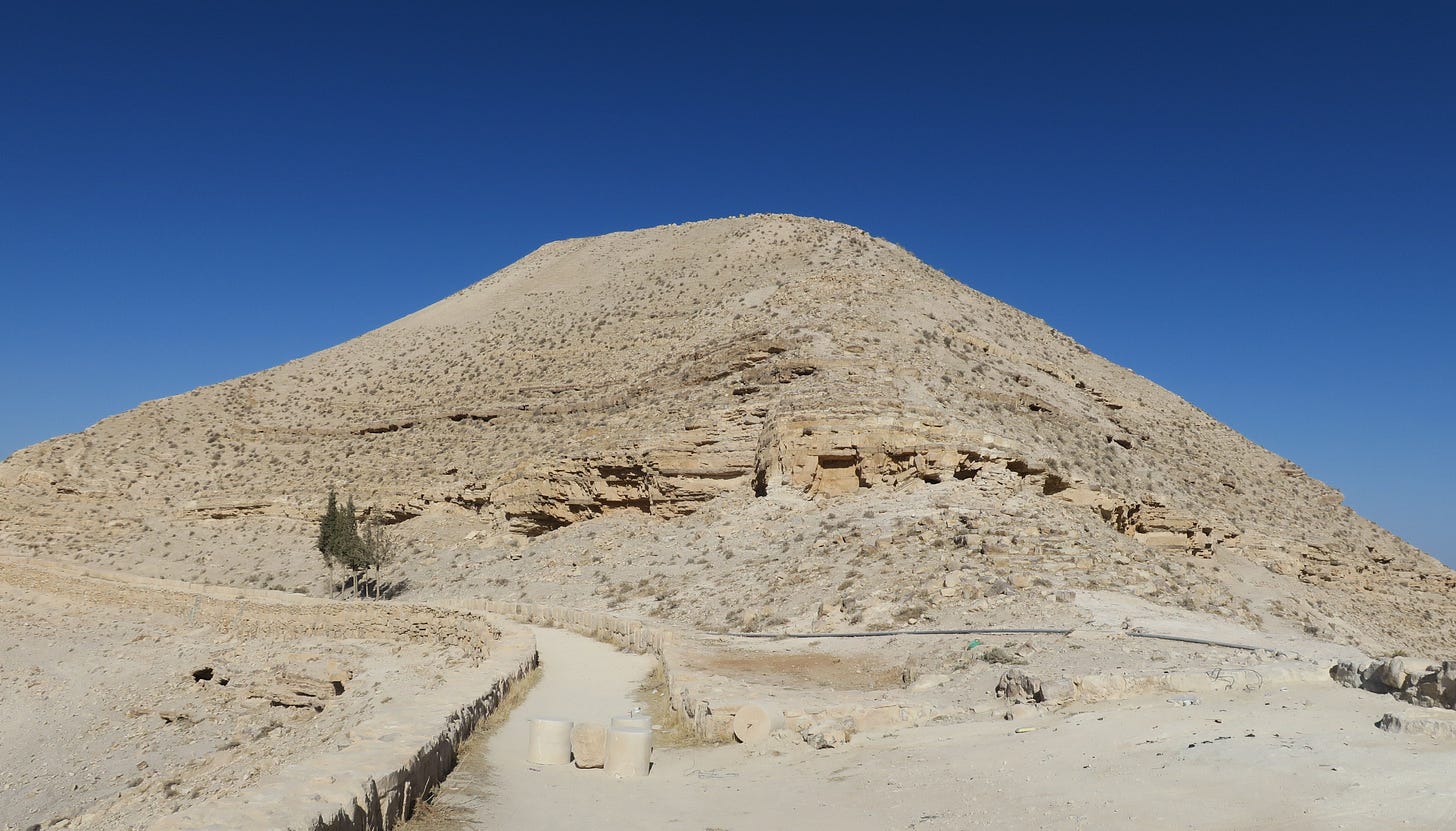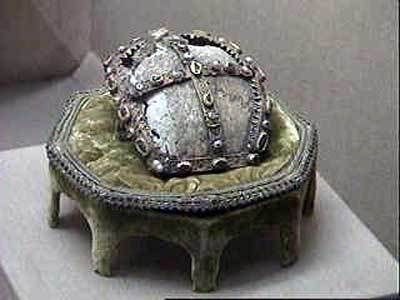The many heads of John the Baptist
A number of sites claim to have the genuine head of John, but do they?
John the Baptist has two feasts on the calendar, but only one head. The Nativity of John the Baptist on September 8 commemorates his birth, and the Beheading of John the Baptist on August 29 commemorates his death.
The beheading took place at the hilltop palace fortress of Machaerus, in Jordan (shown above). I’ve made the climb and it’s steeper than it looks, and would be an impregnable redoubt. Not much is left, but it still leaves a powerful impression.
After John was decapitated at the behest of Salome, we are told that his followers claimed his remains and buried them, and that’s as far as the Biblical account goes. The historian Josephus, in his Jewish Antiquities, independently verifies the scriptural account of John’s death at Machaerus, but makes no mention of his tomb.
What happened to John’s remains after this is unknown, but the prominence of not just the Baptist, but of his head in particular, made certain that it would be a much sought-after relic.
But was it ever found? There are different claimants, with some accounts listing 12 competing heads at one point. Although the trade in fake relics was real, I’m skeptical that at any one time 12 legitimate sources were claiming to possess his head.
It was four, maybe five, tops.
Church of San Silvestro in Capite–Rome, Italy
This church is home to many relics excavated from the Roman catacombs, and has contained the top part (minus jaw) of what they claim was the head of the Baptist since about the 12th century.
Likelihood of authenticity: not so great.
The Cathedral of Amiens–Amiens, France
The cathedral was built in the 13th century to house a head of the Baptist. It had been brought to France in 1206 from the Crusades by Walon de Sarton, a priest from Picardy who said he found in Constantinople. The skull had a gash over the eye, which supposedly gave it legitimacy because Herodias had struck it as it rested in the tray. Except … there’s no Biblical support for that at all, and it’s more likely that the story of Herodias striking John’s head was concocted to add a touch of verisimilitude to the relic.
Likelihood of authenticity: pretty poor.
Residenz Museum–Munich Germany
The location houses objects obtained by Duke Wilhelm V and his son, Maximilian I, who was given permission by the Pope to acquire relics in 1577. As far as I know, there isn’t even a legend of provenance for this skull.
Likelihood of authenticity: nil.
Topkapi Palace–Istanbul, Turkey
John’s right arm (which baptized the Lord) and a fragment of skull was at the palace by at least the 15th century, but little else is known about it.
Likelihood of authenticity: unclear.
Umayyad Mosque–Damascus, Syria
The mosque was built in the 8th century on the site of a Christian basilica that housed the head. It is one of the oldest mosques in the world, and contains the mausoleum of Saladin and Shrine of John. If it was going to anywhere among these options, this is the most likely.
Is it really there?
No idea.
Likelihood of authenticity: fair.










